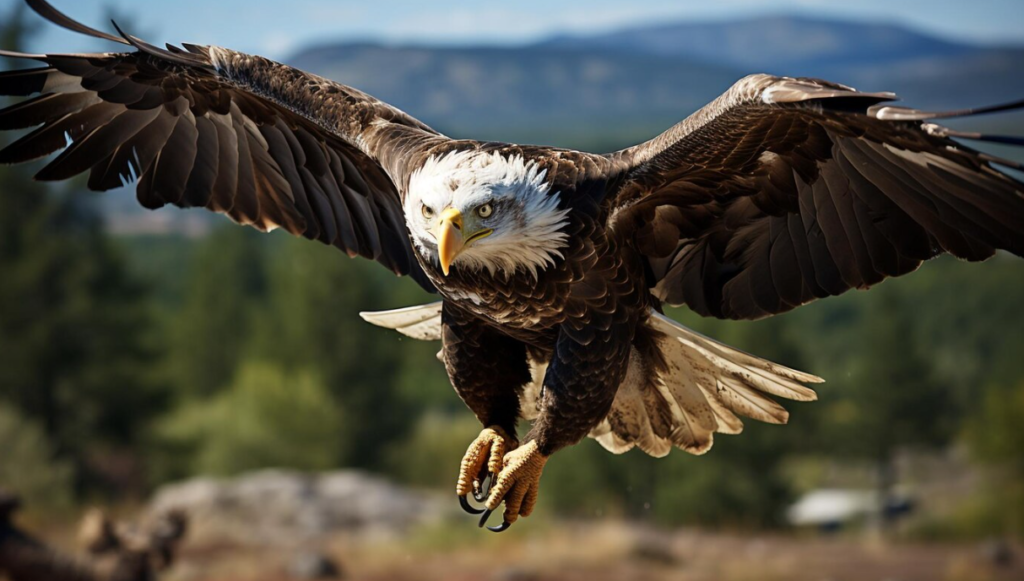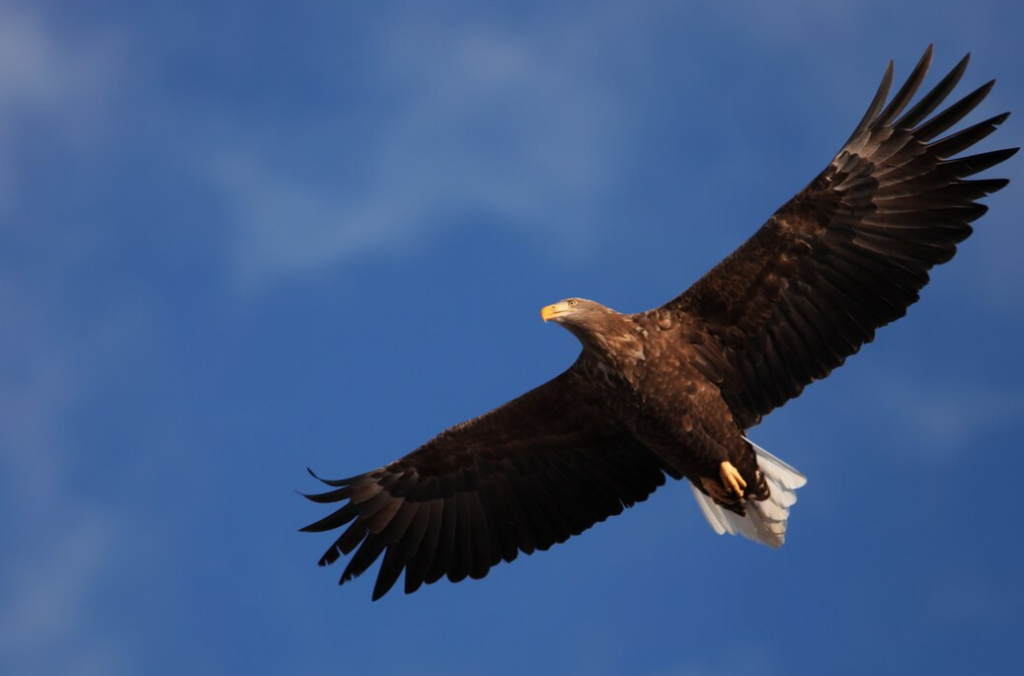The preservation and study of eagles, especially the majestic bald eagle, have become increasingly important in recent times. Technology has stepped up to provide an unparalleled tool for these efforts – the eagle tracker. Armed with advanced eagle GPS technology, researchers, conservationists, and enthusiasts can now gain insights into the life and movements of these raptors like never before.
What Is Eagle Tracker?
The eagle tracker is a sophisticated monitoring device designed specifically for tracking and studying eagles in their natural habitats. Incorporating advanced GPS technology, this tool allows for precise location tracking of these magnificent birds. It’s crafted using materials that are safe and non-intrusive to the eagle, ensuring its natural behaviors remain unaffected. Primarily employed for research, conservation, and educational objectives, the Eagle Tracker offers invaluable insights into an eagle’s migratory routes, feeding habits, and daily activities. By providing a detailed view of their routines and patterns, it assists researchers and conservationists in understanding eagle ecology and in making well-informed decisions for their protection and conservation.
Understanding the Need for the Eagle Tracker
In today’s rapidly changing world, various factors, from habitat degradation and loss to significant climatic shifts, have begun to adversely impact eagle populations. These birds, symbolic of freedom and strength, are increasingly facing challenges in their natural habitats. Monitoring and understanding these challenges is no longer a mere interest but a pressing necessity. Given the vast terrains they cover and the intricate patterns of their lives, manual monitoring proves insufficient. This is where the Eagle Tracker comes into play. Specifically designed for these majestic raptors, the tracker is more than just a device; it’s a bridge to the nuanced world of eagles. The bald eagle tracker, in particular, is a testament to the blend of technology and conservation. Tailored meticulously for this iconic species, it ensures that researchers can delve deep into various aspects of the eagle’s life, from its migratory routes and feeding patterns to its territorial nuances.
Key Features of the Eagle Tracker
The Eagle Tracker stands out as an epitome of technological advancement in the realm of wildlife monitoring, specifically tailored for the majestic eagles. Its Real-time GPS Monitoring feature ensures that the precise location of the eagle is tracked at all times, offering invaluable data about its migratory paths, feeding zones, and nesting grounds. The lightweight design ensures minimal interference, allowing the eagle to soar freely without any hindrance. Another groundbreaking feature is its Data Analysis Capability, which interprets the collected data to shed light on behavioral patterns, highlighting areas of frequent activity or potential threats. Furthermore, its Extended Battery Life ensures prolonged tracking without frequent interruptions for recharging or maintenance. Lastly, the tracker’s Remote Data Access lets researchers access the data from anywhere, making it a versatile tool for continuous and comprehensive eagle monitoring.
| Feature | Description |
|---|---|
| Eagle GPS Tracking | The Eagle Tracker incorporates a GPS tracking system, providing real-time location data for precise monitoring of eagle movements. |
| Tailored for the Bald Eagle | Designed specifically for bald eagles, this tracker considers the bird’s size, weight, and behavior to minimize interference with its natural activities. |
| Correction for Typos | To aid users who may mistype “egale gps,” many resources related to the Eagle Tracker include this keyword, ensuring they find accurate information. |
Advantages of Eagle GPS Tracking

Eagle GPS Tracking offers a plethora of advantages that revolutionize our understanding and conservation efforts for these magnificent birds. Firstly, it provides precision and real-time Monitoring, allowing researchers to obtain detailed insights into an eagle’s migratory routes, feeding habits, and nesting grounds. Such accurate data helps in identifying and preserving critical habitats. Secondly, it contributes to enhanced research capabilities, revealing previously unknown behavioral patterns and shedding light on the intricacies of eagle ecology. This knowledge is invaluable in designing targeted conservation strategies. Furthermore, the tracking helps in human-eagle conflict management by identifying areas of frequent eagle-human interaction, enabling timely interventions or modifications in human activities to reduce potential threats. Lastly, with the growing importance of community engagement in conservation, GPS tracking facilitates public awareness and education by providing real-world data that can be shared with the public, fostering a deeper appreciation and understanding of the majestic eagle.
- Detailed Movement Data: With eagle GPS tracking, researchers can obtain a bird’s-eye view (quite literally) of the routes eagles take, which can shed light on migration patterns, nesting sites, and feeding grounds;
- Conservation Efforts: By understanding where eagles go and what challenges they might face in their environment, conservationists can make informed decisions to protect these magnificent birds;
- Public Engagement: The data from these trackers can also be shared with the public. This can raise awareness about eagles and the challenges they face, leading to greater community involvement in conservation efforts.
The New Age of Tracking Devices

The latest advancements in wildlife tracking technology have unlocked avenues for researchers, allowing them to tackle questions that seemed unreachable a mere ten years ago. We can now delve into the daily and yearly activities of many bird species in unprecedented ways. Due to their prominent size, bald eagles have notably pushed the boundaries of this technological innovation.
During the summer of 2007, CCB, in collaboration with the U.S. Department of Defense, embarked on one of the most ambitious eagle tracking endeavors globally. Leveraging GPS transmitters, this project aimed to trace the pathways of eagles across the Chesapeake Bay and further, providing insights into their interaction with the environment and human establishments.
Since then, CCB has expanded its tracking endeavors, employing both GPS and GSM transmitters across different regions of the Bay. Remarkably, these transmitters have captured around 1 million GPS coordinates, uncovering migration patterns across the eastern part of North America. The data gathered during nighttime has spotlighted over 200 communal roosts in the Chesapeake Bay, reinforcing earlier CCB studies that highlighted areas dense with non-mating eagles.
In a broader perspective, this wealth of knowledge will enhance our grasp of eagle behaviors and guide us in effectively preserving the species in a world progressively shaped by humans.
Conclusion
The Eagle Tracker, with its advanced eagle GPS tracking capabilities, is more than just a piece of technology. It’s a window into the world of eagles, allowing us to learn, protect, and admire these birds in a way that was previously impossible. Whether you’re a researcher, a bird enthusiast, or just someone curious about the majestic bald eagle, the Eagle Tracker offers an unparalleled tool to get closer to these raptors.













+ There are no comments
Add yours